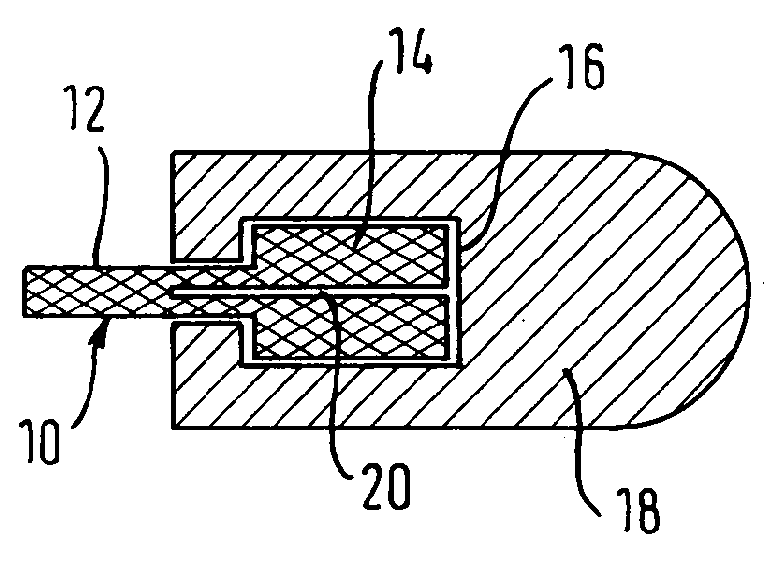Method of welding a component to a shape memory alloy workpiece with provision of an extra cut for compensating the variations of dimension of workpiece and component
a technology of shape memory alloy and component, applied in the direction of prosthesis, manufacturing tools, blood vessels, etc., can solve the problems of inaccurate dimensional tolerance and uncertainty of material removal, and achieve the effect of precise and reliable welding
- Summary
- Abstract
- Description
- Claims
- Application Information
AI Technical Summary
Benefits of technology
Problems solved by technology
Method used
Image
Examples
Embodiment Construction
[0015]We refer first to FIG. 1. What is shown is recognisably equivalent to the welding interface in WO 02 / 15820, between a projection at one end of the stent and a “spoon” of tantalum that surrounds the projection and is welded to it. Thus, in FIG. 1, the nickel titanium shape memory alloy stent 10 has at each end (not shown) a plurality of spigots 12, each of which extends like a neck into a head portion 14 that is received in a recess 16 formed in a “spoon”18 of tantalum metal. Typically, each spoon represents ¼ of the circumference of a tube of tantalum having the same radius as the tube of nickel titanium alloy raw material from which the stent matrix is cut by a laser. See WO 02 / 15820 for more information.
[0016]The intended welding interface is at the periphery of the recess 16, the intention being that weld metal from the components themselves should fill the small gap between the periphery of the recess 16 and the periphery of the head portion 14 within it. Nevertheless, it ...
PUM
| Property | Measurement | Unit |
|---|---|---|
| Force | aaaaa | aaaaa |
| Diameter | aaaaa | aaaaa |
| Shape memory effect | aaaaa | aaaaa |
Abstract
Description
Claims
Application Information
 Login to View More
Login to View More - R&D
- Intellectual Property
- Life Sciences
- Materials
- Tech Scout
- Unparalleled Data Quality
- Higher Quality Content
- 60% Fewer Hallucinations
Browse by: Latest US Patents, China's latest patents, Technical Efficacy Thesaurus, Application Domain, Technology Topic, Popular Technical Reports.
© 2025 PatSnap. All rights reserved.Legal|Privacy policy|Modern Slavery Act Transparency Statement|Sitemap|About US| Contact US: help@patsnap.com


